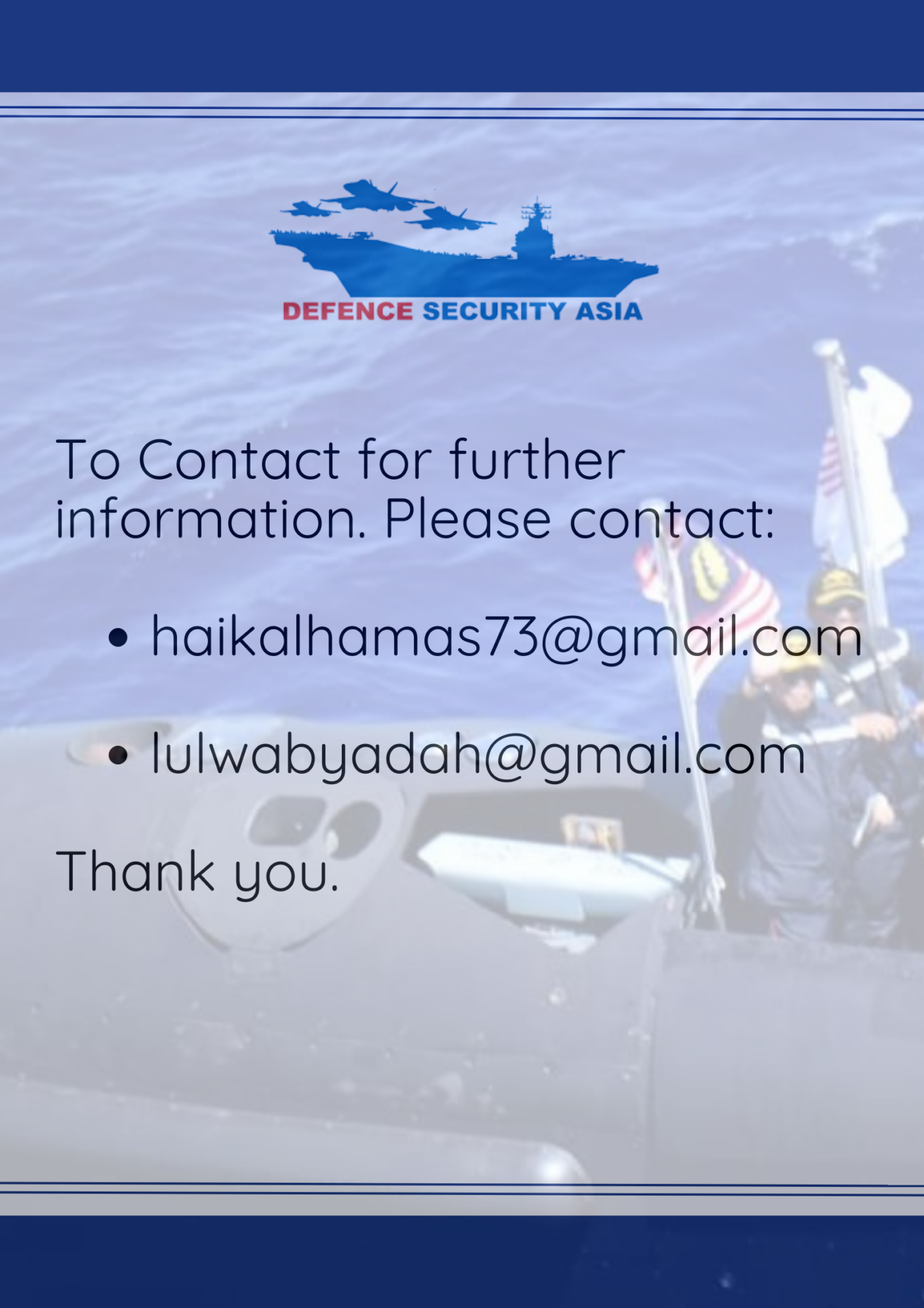Iranian Military Drone Carrier Begins Sea Trials, Set to Become Fully Operational
Recent satellite images showed one of Iran’s drone carriers, the “Shahid Bagheri,” sailing in waters near the Bandar Abbas naval base in the Persian Gulf.
(DEFENCE SECURITY ASIA) – Satellite images have revealed the presence of an Iranian drone carrier operating in waters off a naval base in Bandar Abbas, likely conducting sea trials before it becomes fully operational.
Recent satellite images showed one of Iran’s drone carriers, the “Shahid Bagheri,” sailing in waters near the Bandar Abbas naval base in the Persian Gulf.
Notably, the drone carrier is equipped with a “ski jump” ramp, similar to the “Short Takeoff Barrier Assisted Recovery” (STOBAR) system used on conventional aircraft carriers. However, this feature is designed specifically for launching drones.
The Iranian drone carrier is believed to be undergoing its first sea trials since leaving the Iran Shipyard and Offshore Industries (ISOICO) facility in late November.
Iran has developed three such drone carriers: the “Shahid Bagheri,” “Shahid Roudaki,” and “Shahid Mahdavi.”
Recent satellite imagery captured all three vessels currently stationed in the Persian Gulf.

The drone carriers are expected to enable Iran’s military to deploy unmanned aerial vehicles (UAVs) closer to conflict zones.
Despite years of Western sanctions, Iran has successfully developed an arsenal of armed drones, which have been used in regional conflicts and reportedly in Europe, where Iranian-made Shahed drones have been deployed by Russia in its conflict with Ukraine.
The Shahed-129, introduced in 2012, has been mass-produced and deployed in multiple combat theaters.
Meanwhile, the Mohajer-6 has reportedly been supplied to the Iranian Revolutionary Guard Corps (IRGC) since 2018 and has been used by militant groups such as Hezbollah, Houthi rebels, and Hamas in their operations against Israel, Iran’s primary adversary in the Middle East.
Satellite imagery also revealed two other Iranian drone carriers, the “Shahid Mahdavi” and “Shahid Roudaki,” which have been converted from commercial vessels into military platforms and are anchored nearby.
These vessels lack ski-jump ramps, indicating they are only compatible with drones capable of vertical takeoff and landing, unlike the runway-dependent Shahed and Mohajer drones.

The Shahid Roudaki is a versatile warship capable of carrying drones, helicopters, and missile launchers. Originally a commercial vessel, it has been repurposed for military use, making it the third such conversion following the Shahid Bagheri and Shahid Mahdavi.
A marked “X” on its deck serves as a helipad, and the vessel is also capable of carrying fast attack crafts.
Speaking to Persian media last year, a senior Iranian military official described vessels like the Shahid Mahdavi and Shahid Bagheri as “mobile maritime cities” designed to perform various missions at sea.
“They can stabilize the Sea Lines of Communication (SLOC) and provide support to Iranian fishing and commercial vessels, as well as those of regional nations in need,” stated Rear Admiral Ali Reza Tangsiri, Commander of the IRGC Navy.

Iranian media reports indicate that the nation’s drone carriers will enhance its surveillance and strike capabilities, allowing the use of kamikaze drones to extend operational reach far beyond its maritime borders.
This development is likely to alarm both the United States and Israel, which maintain significant strategic interests in the region.
Among the drones expected to be deployed on these carriers is the Shahed-136 kamikaze drone, which has been supplied to Russia for use in Ukraine.
With a range of 2,000–2,500 km, the Shahed-136 poses a significant threat to commercial vessels navigating regional maritime routes.
The deployment of Iran’s drone carriers represents an effective, asymmetric threat and provides Tehran with new opportunistic capabilities in a region fraught with ongoing tensions. — DSA



